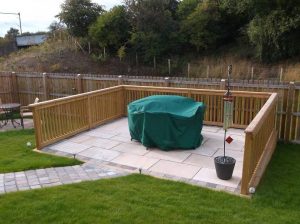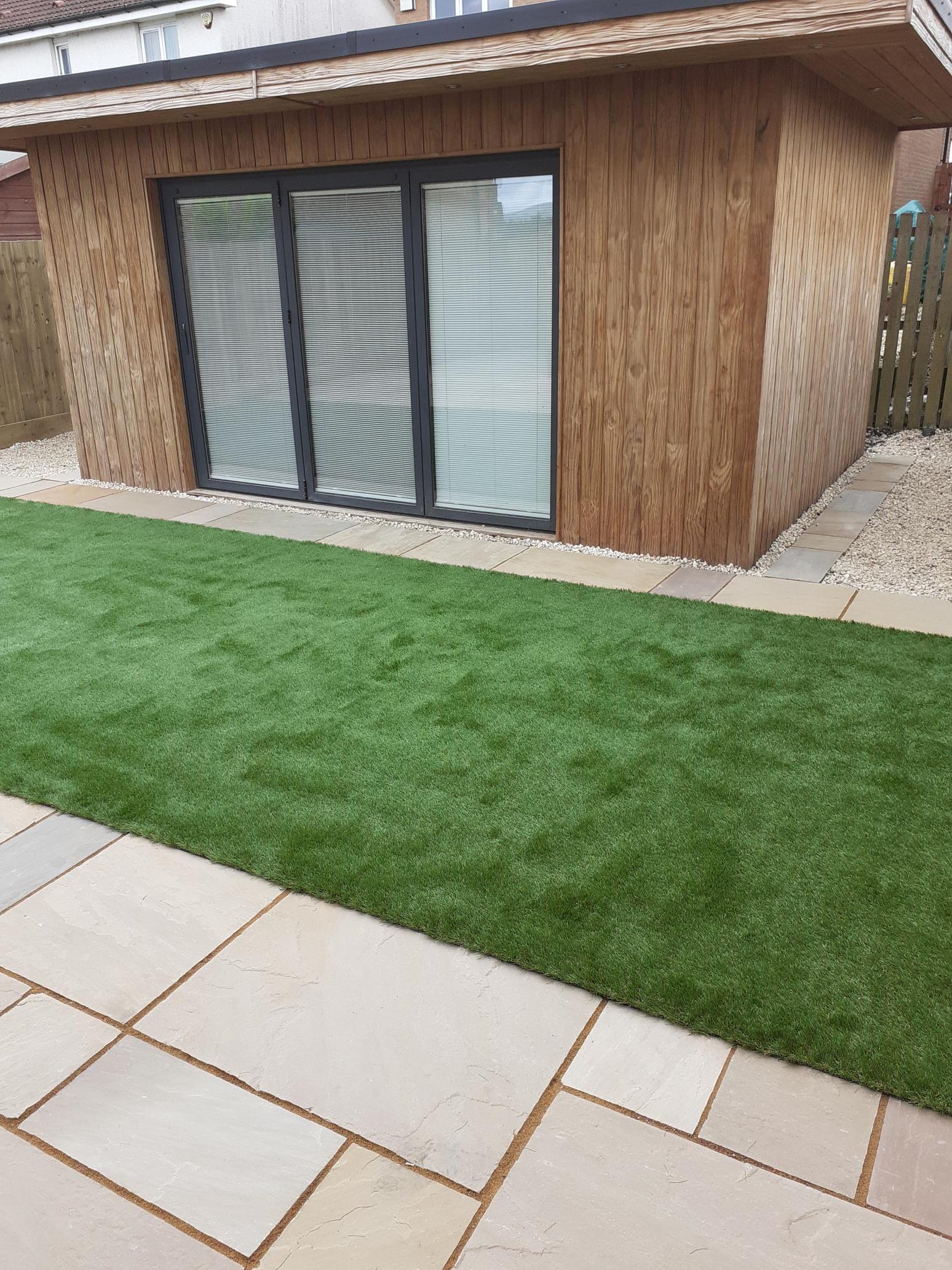Choosing the right patio material is crucial, especially in Scotland, where the weather can be particularly unpredictable. From the wet winters to the long-awaited sunny summer day, your patio needs to withstand various conditions. Opting for a durable patio not only ensures longevity but also offers long-term cost savings and maintains the aesthetic appeal of your outdoor space.
At Bradshaw Contracts Ltd, we know you want value for money, and a patio that lasts for as long as you need it. We’re more than happy to take you the various factors to consider when looking for a patio with a touch of longevity.
Understanding Scotland’s Climate
Scotland’s climate is known for its distinct characteristics: frequent rainfall, occasional snow, and temperature fluctuations. These conditions can significantly affect the longevity of patios. Therefore, when selecting patio materials, it’s essential to consider drainage, frost resistance, and UV stability.

Types of Patios and Their Longevity
We’ll quickly go over some of the most popular types of patios, their pros, their cons, and what maintenance they require.
Concrete
Pros: Offers durability and versatility in design. It’s also cost-effective.
Cons: Potential for cracking, especially with frequent freeze-thaw cycles. Can become slippery when wet.
Maintenance: Regular sealing can prevent water absorption and enhance longevity.
Natural Stone (e.g., granite, slate, limestone)
Pros: Highly durable, offers timeless beauty, and naturally resists the elements.
Cons: Some types, like sandstone, may require sealing to prevent moisture absorption.
Maintenance: Regular cleaning and occasional sealing, depending on the stone type.
Clay Brick
Pros: Provides a classic appearance and is reasonably durable.
Cons: Susceptible to cracking in freeze-thaw cycles and may fade over time.
Maintenance: Regular checks for damage and prompt replacements of cracked bricks.
Composite Decking
Pros: Resistant to rot and insects, and requires minimal maintenance.
Cons: Initial costs can be higher, and there’s potential for colour fading.
Maintenance: Occasional cleaning with a mild detergent.
Gravel
Pros: Ensures excellent drainage and is easy to install.
Cons: Gravel can shift over time, and weeds might sprout through.
Maintenance: Regular weeding and occasional top-ups with fresh gravel.
Of course, we know that Indian Sandstone is a hugely popular choice in Scotland, so we’ll look at that in greater detail.

Indian Sandstone: A Popular Choice in Scotland
Indian sandstone has gained immense popularity in Scotland over the years. Renowned for its diverse colour palette, ranging from warm autumnal hues to cool mint greens, this natural stone offers both beauty and functionality.
Pros:
Aesthetic Appeal: Indian sandstone boasts a unique texture and colour variation, ensuring that no two slabs are identical. This diversity can create a visually striking patio that complements various architectural styles.
Durability: When properly maintained, Indian sandstone can withstand Scotland’s unpredictable weather conditions, from heavy rains to occasional frosts.
Cost-Effective: Compared to other natural stones, Indian sandstone offers a balance between affordability and longevity, making it a preferred choice for many homeowners.
Cons:
Porous Nature: Indian sandstone is relatively porous, which means it can absorb water. In Scotland’s wet climate, this can lead to potential issues like moss growth or frost damage if the stone isn’t adequately sealed.
Maintenance: To retain its original beauty and ensure longevity, Indian sandstone may require periodic sealing to prevent moisture absorption and staining.
Maintenance Tips for Indian Sandstone and your Patio
You can enhance the lifespan of your patio, and here are some tip tips.
Sealing: Applying a high-quality sealant can enhance the stone’s resistance to water, stains, and algae growth.
Regular Cleaning: Gentle cleaning with a soft brush and mild detergent can help maintain the stone’s natural beauty. It’s advisable to avoid power washing, which can erode the stone’s surface.
Prompt Attention: Addressing spills or stains promptly can prevent permanent discolouration.
Factors Affecting Patio Longevity in Scotland
Knowing the issues which are likely to impact the condition of your patio will help you make a better decision in which material to choose, or what sort of patio to choose.
Proper Installation: A well-laid foundation is crucial. It’s worth investing in professional installation to ensure longevity.
Maintenance: This includes regular cleaning, sealing (where necessary), and checking for damage.
Protective Measures: Using patio covers during heavy rainfall, ensuring efficient drainage, and addressing minor repairs promptly can prolong the life of your patio.

Cost vs. Longevity in Scotland
While some durable patio materials might come with a higher initial cost, the long-term benefits in terms of reduced repairs and replacements can make it a worthy investment. Given Scotland’s unique climate, it’s essential to weigh initial costs against the long-term durability and maintenance savings.
In the ever-changing Scottish climate, choosing a durable patio type is paramount. While aesthetics are essential, longevity ensures that your outdoor space remains beautiful and functional for years to come. By considering both durability and design, homeowners can create a patio that stands the test of time.
Give us a call on 07927275538 or send us a message, and we’ll be happy to talk about how we can help you find the best value for money patio in Glasgow.


